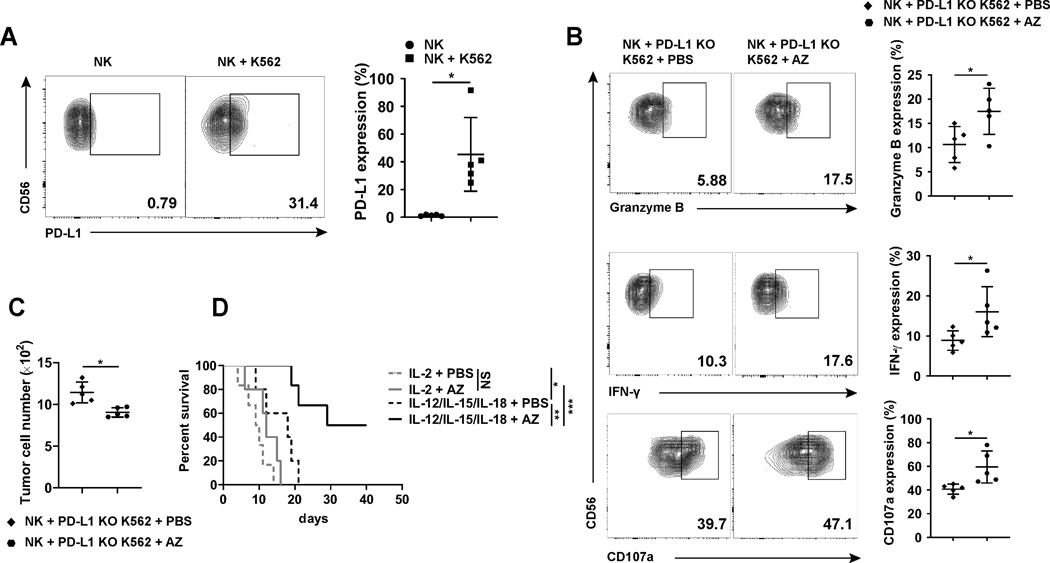Fig. 5.
Effects of the anti-PD-L1 mAb AZ and/or NK-activating cytokines on antitumor efficacy in vivo. (A) Human NK cells were injected i.v. into NSG mice without or with PD-L1 KO K562 cells followed by i.p. injection of 1 μg IL-12 and 1 μg IL-15 per mouse every other day. After 6 days, mice were sacrificed, and NK cells were isolated and assessed for PD-L1 expression by flow cytometry. Representative flow cytometric analyses and summary data are shown (n = 5). (B and C) Human NK cells and PD-L1 KO K562 cells were injected i.v. into NSG mice, followed by treatment with i.p. injection of AZ or PBS every other day. PBS was used instead of IgG1 as placebo because AZ lacks antibody-dependent cellular cytotoxicity activity. After 6 days (three treatments), mice were sacrificed and human NK cells were examined for (B) their expression of granzyme B, CD107a, and IFN-γ or (C) the number of PD-L1 KO K562 cells by flow cytometry. Representative analyses and summary data (n = 5) are shown. (D) Survival curve of NSG mice injected i.v. with primary human NK cells and PD-L1 KO K562 cells followed by treatment with IL-2 plus PBS, or IL-2 plus AZ, or the combination of IL-12, IL-15 and IL-18 plus PBS, or the combination of IL-12, IL-15 and IL-18 plus AZ every other day for two weeks. Two paired groups were compared by paired t test (A-C). Kaplan-Meier method was used to estimate survival functions and log rank test was applied to group comparisons (D). *, P < 0.05; **, P < 0.01; ***, P < 0.001; NS, not significant.

